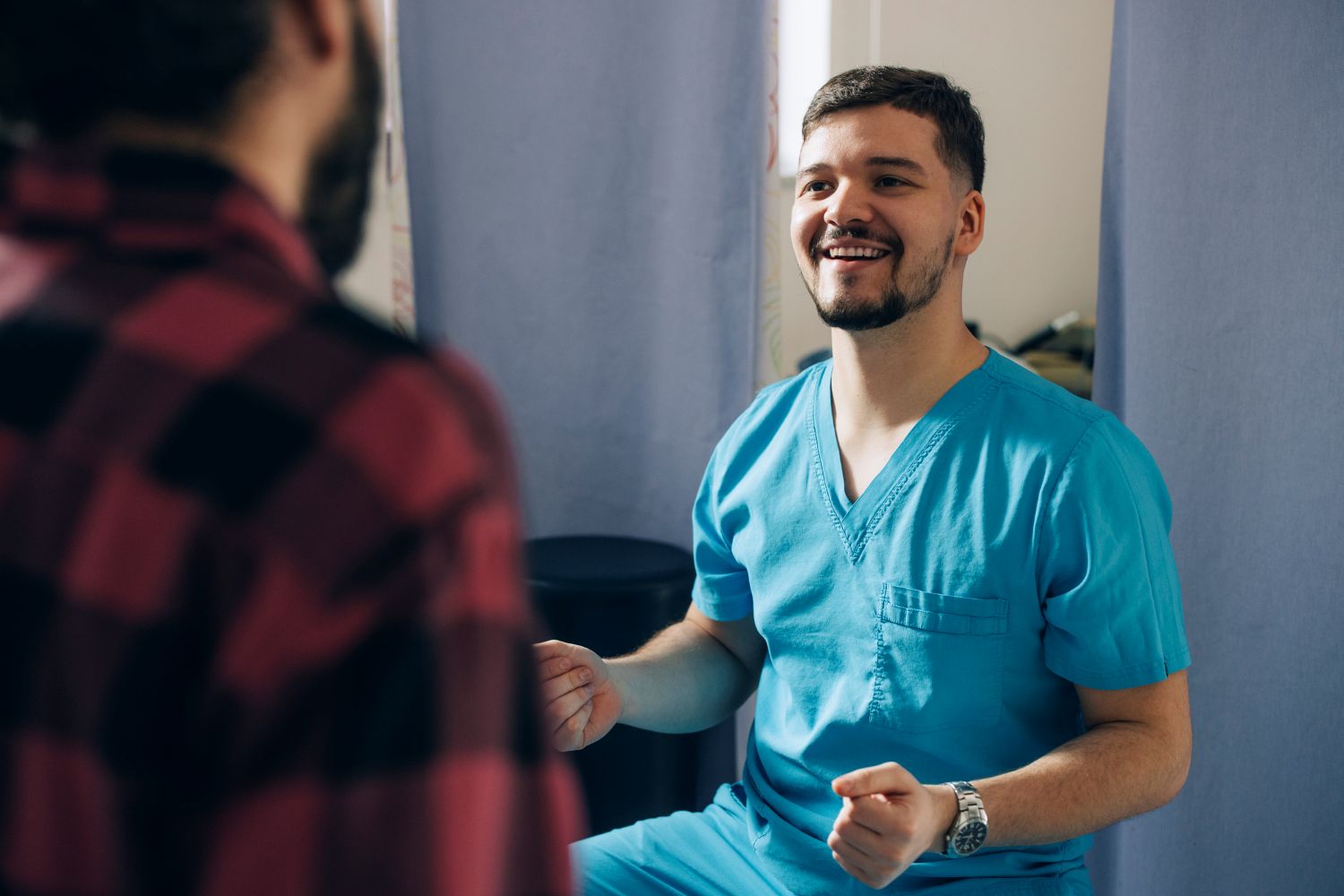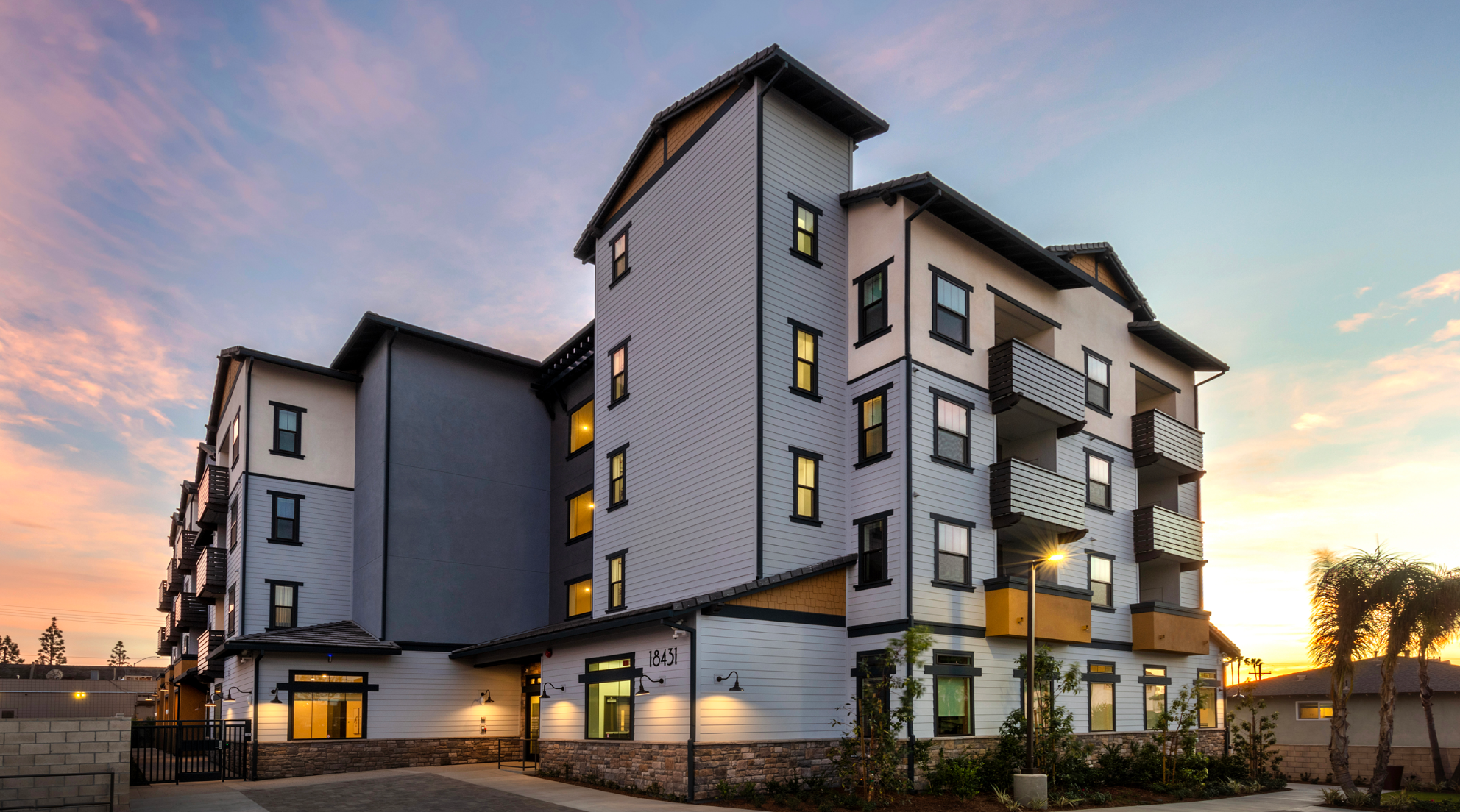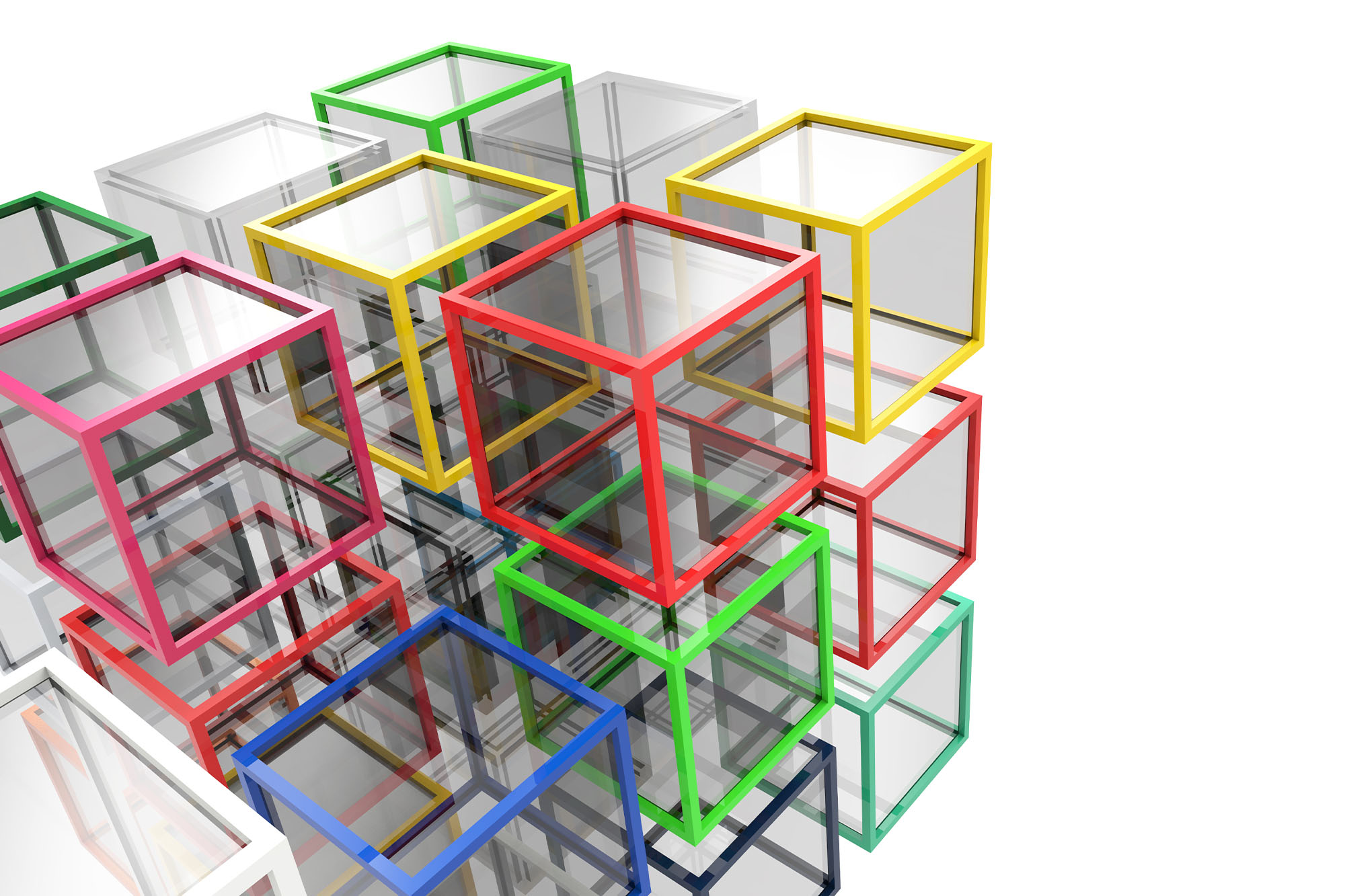View the Report
Jump to All Downloads & LinksBackground
About This Series
This series focuses on the challenges of addressing the health and health care needs, both related and unrelated to the pandemic, of people who are homeless, and spotlights emerging care innovations, partnerships, and practices across the state.
People experiencing homelessness are one of the populations most impacted by COVID-19 in California because they lack protection from the environment, adequate access to hygiene and sanitation facilities, or connection to services and health care. Numerous entities across the state, including public health departments, health care organizations, and housing providers, are working to address the health and social needs of this population during the current crisis. Within this ecosystem of response efforts, California’s Medicaid managed care plans have a particularly valuable role to play to support this population.
L.A. Care Health Plan (L.A. Care), which serves over 2.1 million members in Los Angeles County, is one example of a plan that rapidly recalibrated existing homelessness support services to address the immediate needs of people experiencing homelessness related to COVID-19 pandemic. The size of the county’s homeless population — estimated by the Los Angeles Homeless Services Authority (LAHSA) at 66,436 as of January 2020, a nearly 13% increase over last year — and the number of L.A. Care’s membership who experience homelessness (roughly 33% of all those experiencing homelessness in the county) necessitated that L.A. Care develop a multifaceted approach to serving this population.
The health plan’s approach includes collaborative efforts with key local partners such as Brilliant Corners, a nonprofit partner with the Los Angeles County Department of Health Services Housing for Health program. Prior to the pandemic, L.A. Care announced a $20 million commitment to Brilliant Corners to support permanent supportive housing under the Whole Person Care program, an initiative under California’s 1115 waiver through which LA County obtains federal matching dollars to provide wraparound services to high-risk Medi-Cal enrollees. The LA County Department of Health Services leads the effort and has developed multiple programs that address social determinants of health for high-risk populations.
A second part of its approach builds on its role as a Health Home lead entity in LA County. L.A. Care’s Health Homes Program provides team-based, in-person care coordination for the chronically ill and highest-risk members. L.A. Care has been able to prioritize members experiencing homelessness by providing Medi-Cal-funded housing navigation and tenancy support services through its partner service providers, called Community-Based Care Management Entities. These continuing efforts have been an important foundation in responding to the COVID-19 pandemic and its unique impact on people experiencing homelessness.
The Center for Health Care Strategies spoke with Alison Klurfeld, Director of Safety Net Programs and Partnerships at L.A. Care, to discuss how the health plan has been supporting those experiencing homeless during the pandemic, why health plans are uniquely positioned to help address the needs of this population in this moment, how L.A. Care’s response has evolved since the beginning of the pandemic, and the challenges that still remain.
Q: What are the most pressing needs you have seen in your members experiencing homelessness during the COVID-19 pandemic?
A: Los Angeles has such a big population of people experiencing homelessness, and one of the biggest problems has always been that there are not enough housing resources to move people off the streets, either in the form of temporary shelters or permanent housing. The pandemic has added on new challenges — there are general concerns about the spread of COVID-19 in congregate settings, due to the inability of shelter residents to self-isolate or adequately socially distance, and there are health care access issues. We’ve also heard from our partners about limited access to food and supplies for unsheltered individuals because the usual places to get these resources have not been available to them.
In the early response period, an immediate concern for our partners was getting testing up and running. Our community clinics, the LA County Department of Public Health, and the county-run Housing for Health program experienced challenges in implementing testing, particularly in street-based encampments. The county now has set up fairly comprehensive testing for people experiencing homelessness in LA, with multidisciplinary teams working through prioritized testing and technical assistance for both sheltered and unsheltered settings.
We have heard from our providers that even though there are isolation and quarantine facilities for individuals who are symptomatic or tested positive for COVID-19, many people experiencing homelessness have been reluctant to go for a variety of reasons. COVID-19 isolation and quarantine sites may not allow people to bring their possessions, including pets, or offer a place to store their personal belongings. Others may be reluctant to go because they don’t want to be separated from friends or community supports. This made it difficult to accurately detect and mitigate outbreaks.
High-risk individuals who are older or have chronic medical conditions have been placed into Project Roomkey protective housing sites and often had unmet health care needs. Initially, we were working on getting them access to durable medical equipment such as incontinence supplies, shower chairs, and raised toilet seats. We quickly realized that wasn’t enough and also began to examine ways to ensure that acute and chronic health care needs could be addressed in these settings.
However, now there are many more formalized partnerships between homeless services providers and health providers in Project Roomkey. For example, LAHSA has arranged to have clinics coming on-site one to two times a week at about two-thirds of the Project Roomkey sites. In July, L.A. Care and several other funders began to support clinics financially through the Health Pathways Expansion, an initiative to expand non-COVID-19 health services in shelters and through street-based services, with priority given to care delivery in LA County Project Roomkey sites.
Q: What are some innovative approaches L.A. Care is taking to maintain continuity of necessary health care services for those experiencing homelessness during this time?
A: We’ve taken three main approaches to address continuity of services for people experiencing homelessness or who are on the verge of homelessness.
First, one of the biggest challenges is that the traditional health plan primary care physician assignment model doesn’t work well for people experiencing homelessness, so the priority during the pandemic has been to support primary care access in other ways. A major strategy has been to leverage the Health Pathways Expansion initiative to support this. We awarded United Way of Greater Los Angeles $500,000 to engage health care providers in a 6- to 12-month grant program called the Health Pathways Expansion. This funding is specifically for the expansion of non-COVID-19 health services for Project Roomkey sites, street-based services, and other COVID-19 activated emergency shelters and emergency sites, which will allow it to meet the health care needs of this population that were falling to the wayside during the initial crisis response. The grant is implemented in partnership with LAHSA’s emergency response to the COVID-19 pandemic, and they will also be involved to align efforts for needed care.
A second strategy we developed was to open up hospital beds by increasing available beds at recuperative care sites for people experiencing homelessness after discharge from the hospital for short-term recuperation. However, an initial hospital surge in the spring thankfully did not materialize. As of early July, L.A. Care is still finding that our current recuperative care capacity is sufficient to address our members’ and providers’ needs, and we do not expect to need the additional recuperative care beds to support referrals from hospital discharges. While we are now seeing an increase in cases in LA and conditions could still change, the vast majority of hospital discharge support needs in the last three months have been for members who need skilled nursing facility level of care, rather than a need for increased support at the recuperative care level.
Lastly, early in the COVID-19 crisis, we took a deep look at the various financial mechanisms we had for directing as much money as possible to respond to the pandemic, and have been able to draw on a number of sources, including our Community Health Investment Fund and administrative reserves to fund crisis response efforts such as food access and eviction prevention. Our overall COVID-19 response efforts include about $6 million in grants with other funding and in-kind supports. For the second year in a row and with an eye toward both people experiencing homelessness as well as eviction prevention, we are awarding up to $750,000 in a second round of our Housing Stability Initiative to agencies to provide services such as pre-eviction counseling and landlord negotiation to community members at risk of losing their housing. We decided that it was important to continue the program during the COVID-19 crisis, especially as unemployment rates increase during the pandemic and given the associated health care concerns that come with homelessness. We increased funding for the program compared to last year.
Q: How have community partnerships evolved to address the situation? Are there key community assets that you have leveraged to support the health care needs of people who are homeless?
A: We are so fortunate to have regular communication with our county partners, such as Housing for Health, LAHSA, and our community clinics. These are the main entities providing health care and supportive services to people experiencing homelessness. We are drawing on relationships that we built prior to the COVID-19 pandemic — that trust has made it easier to go directly to them and ask what is the real need and how can we fix that? Food has emerged as the greatest need to support individuals during self-quarantine and self-isolation. We also heard from our street medicine providers that tents could be useful during the pandemic to facilitate isolation and quarantine for individuals without shelter. Our grants to United Way, Housing for Health, and Brilliant Corners can support the purchase of some tents. We have found that there is high value in focusing on logistics as much as strategy. We shared our supply of hand sanitizers with our community clinic partners and their street medicine teams and helped coordinate distribution from health plan partners as well.
Another response to the issues that our community partners have identified includes a COVID-19-related grant of $475,000 in partnership with Housing for Health and Brilliant Corners given to United Way to get critical supplies out in the community for unsheltered people experiencing homelessness to address basic needs. That funding is going to a variety of areas that our county partners have prioritized as most urgent, which right now include access to food, supplies, and hygiene kits.
We also heard from our street teams that clients haven’t had access to transportation to Project Roomkey hotels, so we launched a nonmedical transportation program to break down that barrier. Unlike individuals placed into isolation and quarantine who have access to emergency medical services transportation, those placed in protective housing have no prearranged way of getting to their assigned sites. Since transportation is a Medi-Cal benefit for our members, we launched discretionary trips to support this aspect of the COVID-19 response. Our utilization rates have been low, but steady.
Q: What is still needed to continue meeting the needs of this population in the months to come?
A: We’ve been thinking about data solutions to better identify people in need of services. In homeless services, all the data comes from the Homeless Management Information System, which is also where LAHSA enters information on who is placed in the Project Roomkey self-isolation beds. One thing on my priority wish list is getting access to demographic and location data from LAHSA, which will be especially helpful during the pandemic. Because of who Project Roomkey is targeting, counties, health departments, and health plans have a really big opportunity to identify high-risk people who have underlying medical conditions, are experiencing homelessness, and need health care. These COVID-19 placements have created an opportunity for health plans to better understand who these individuals are along with their medical histories or comorbidities. We are planning a data match with LAHSA for individuals in Project Roomkey who might be eligible for Health Homes. With this newly acquired data, we’ll be able to proactively match, check eligibility, and begin outreach to get as many people into case management as possible.
We’ve also been thinking about telehealth for people experiencing homelessness. The California LifeLine Program is a federally funded effort that provides phone access to populations with low incomes, but their requirements are prohibitive in regard to access for people experiencing homelessness. Often, the phone has to be mailed, people need an actual address or an identification card. We are pursuing other options with private phone companies such as Tracfone or Assurance Wireless to see if they can come on-site to clinics, so that people could sign up and receive phones while there.
We also need to think about the right conditions for implementing successful telehealth visits. Even if people who are unsheltered have phones on hand, charging stations are not accessible for them right now. For people in congregate shelters, we’ve talked about setting up patient navigators who can bring the phone to the patient in a private space to conduct the visit.
We’re continuing to brainstorm the logistics of telehealth for people experiencing homelessness. At least during the COVID-19 pandemic, there is currently temporary payment parity to support telehealth. Some of our community clinic partners have expressed concerns that the payment parity period will not be long enough. At the end of the day, we are going to need as much innovation and long-term support as long as possible to serve our population of people experiencing homelessness in LA County during and in the aftermath of this pandemic.





